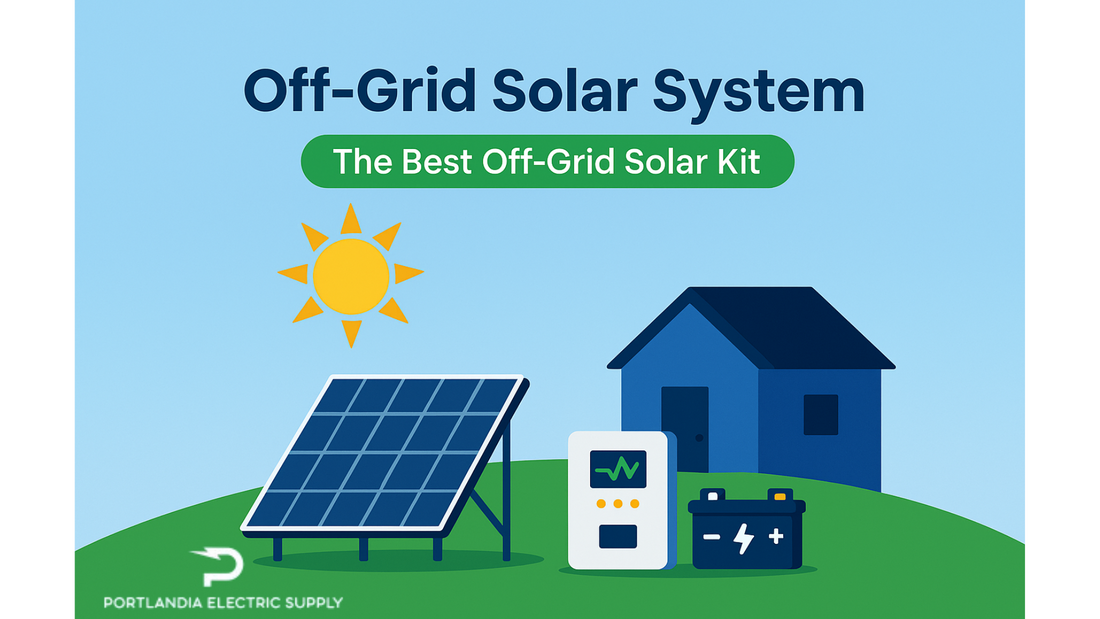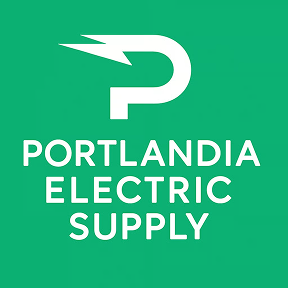
Off-Grid Solar System: The Best Off-Grid Solar Kit
Share
Off-Grid Solar System: The Best Off-Grid Solar Kit
In an era where energy independence is becoming increasingly sought after, off-grid solar systems have emerged as a viable solution for those looking to disconnect from the utility grid. Whether you're aiming to power a remote cabin, a campervan, or simply seeking autonomy from traditional power sources, off-grid solar systems offer a sustainable and reliable alternative. Explore the world of off-grid solar to discover how you can harness the power of the sun.
Introduction to Off-Grid Solar Systems
Embracing off-grid solar power involves creating a self-sufficient energy setup that allows you to live independently from the utility grid. This means producing 100% of your electricity through an off-grid solar system, consisting of solar panels, inverters, and battery banks. By generating your own power, you can meet all your household energy needs on-site, providing resilience against outages and reducing reliance on conventional energy sources.
What is an Off-Grid Solar System?
To truly go off the grid means to sever ties with your utility company and establish a self-reliant energy system.
| Component | Function |
|---|---|
| Solar Panels | Capturing solar energy |
| Solar Inverter | Convert solar energy into usable electricity |
| Battery Bank | Storing excess energy |
This setup ensures that even during times when sunlight is scarce, you maintain a steady supply of power to meet your daily needs.
Benefits of Going Off-Grid
Going off-grid with solar power provides the flexibility to access energy even in areas without grid coverage. Unlike grid-tied solar systems, off-grid setups are easier to establish since they bypass the need for permits or regulatory compliance. This adaptability allows off-grid systems to be used in various settings, from tiny homes to RVs and boats. The addition of lithium batteries with islanding capabilities can enhance the reliability of your energy supply, ensuring energy independence and allowing you to reclaim control over your power usage.
Key Terminology in Solar Power Systems
Understanding the terminology associated with solar power systems is crucial when considering an off-grid solar installation. The phrase "off the grid" signifies living autonomously, without any dependence on a utility for power. This involves understanding components such as solar panels, inverters, and charge controllers, which play pivotal roles in converting and managing solar energy to suit your specific energy needs.
Components of a Complete Off-Grid Solar Kit
Solar Panels: The Heart of the System
Solar panels are the cornerstone of any off-grid solar system, converting sunlight into usable electricity. The size and efficiency of your solar panel array directly impact how much solar energy you can harness each day. Different types of panels, such as monocrystalline and polycrystalline, cater to varied needs, while bifacial panels, capturing sunlight from both sides, offer an edge in energy production.
| Feature | Details |
|---|---|
| High-efficiency panels | Often included in off-grid solar kits |
| Performance warranty | 25-year warranty, ensuring long-term reliability |
Battery Banks: Storing Solar Power
Battery banks are essential in storing the energy produced by your solar panels during daylight hours. These batteries allow you to draw power even when sunlight isn't available, such as during nighttime or cloudy days. Off-grid systems commonly use deep-cycle batteries, including advanced lithium iron phosphate technology, which are designed for gradual discharge and recharge.
| Battery Type | Feature |
|---|---|
| Lithium Batteries | Favored for their long lifespan and minimal maintenance |
| Charge Controller | Optimizes current and voltage, protects battery cells from overcharging |
Inverters: Converting Power for Use
An inverter is crucial in transforming the direct current (DC) produced by solar panels into alternating current (AC), which most household appliances use. The inverter's size should align with your peak power requirements, ensuring it can handle the electrical loads of your off-grid setup. Proper inverter selection is vital to maintaining the efficiency and functionality of your complete solar system, enabling a seamless transition to off-grid living.
Choosing the Best Off-Grid Solar Kit
Factors to Consider When Selecting a Solar Kit
To choose the best off-grid solar kit, start by assessing the daily energy consumption of your appliances. Your off-grid solar system must generate sufficient energy to meet these needs, balancing cost and features. Opt for kits that include modern, high-efficiency lithium batteries and comprehensive installation manuals. These considerations ensure a well-rounded system tailored to your energy requirements.
Top Features of the Best Off-Grid Solar Systems
When evaluating off-grid solar systems, prioritize kits that offer a “plug-and-play” design, simplifying installation. Comprehensive kits should include all necessary components like cables and connectors, enhancing ease of use. Longer product warranties, typically 10 years for panels with a 25-year performance guarantee, indicate quality. Consider options like the Eco-Worthy 4800 W for larger applications, or the Renogy 400 W for cost-effective solutions from reputable brands.
Comparing Off-Grid Solar Kits and Grid-Tied Solar Systems
While grid-tied solar systems are prevalent due to widespread electric grid coverage, off-grid solar is indispensable for remote or mobile applications like cabins, RVs, and boats. Off-grid systems rely on solar panels and battery storage rather than grid connectivity. These systems excel in scenarios where grid access is impractical, offering an alternative for energy generation and storage, ensuring autonomy even in isolated locations.
Solar Installation and Setup
Steps to Install Your Off-Grid Solar System
When embarking on setting up an off-grid solar system, it is essential to consider several key factors to ensure efficient energy production and usage. Begin by assessing your daily and nightly energy needs, as well as your peak power demand. These parameters will help you determine the appropriate size of your solar panel array and battery bank. Moreover, prioritize safety by incorporating safety disconnects, grounding equipment, and surge protections into your system components. Awareness of potential risks such as lightning strikes, equipment malfunctions, and electrocution is crucial for a secure solar installation process.
Understanding Charge Controllers
A charge controller is a vital component in optimizing your off-grid solar power system. It regulates the flow of electricity from the solar panels to the battery bank, preventing overcharging and overloading. Our string inverter kits typically include several solar panels wired into a central inverter unit, which is complemented by a 60A MPPT solar charge controller. This controller enhances the longevity and efficiency of your solar batteries by providing built-in protections, ensuring that your solar energy system functions optimally over time.
Common Mistakes in Off-Grid Solar Installation
Installing an off-grid solar system requires expertise that often extends beyond what DIY guides or online research can provide. Attempting a DIY solar installation can lead to system errors, inefficiencies, and safety hazards. It is advisable to engage professionals who are skilled in installing solar panel systems, particularly in managing the complexities of an off-grid setup. This not only ensures the system's reliability but also safeguards against potential mishaps that could compromise both the system's performance and user safety.
Calculating Your Off-Grid Power Needs
Using a Solar Calculator for Your System
Utilizing a solar calculator is an effective way to estimate the number of solar panels required for your off-grid solar setup. This tool helps you determine your energy needs by considering factors such as location, sunlight availability, and the wattage of appliances you plan to power. By inputting these variables, you can gain insights into the size and capacity of the solar kit that best suits your energy independence goals, optimizing your off-grid power strategy.
Estimating Energy Consumption of Appliances
Understanding your electricity load is a fundamental step in transitioning to an off-grid solar power system. Begin by analyzing your electric bill or calculating the wattage of each appliance you intend to use. This assessment provides a clearer picture of your energy consumption, helping you design a solar energy system that adequately meets your daily requirements. By accurately estimating your energy usage, you can ensure that your off-grid solar panel setup is both efficient and sustainable.
Scaling Your Off-Grid Solar System
Scaling your off-grid solar system involves expanding your solar panel array, battery storage, or both to accommodate increasing energy needs. As your consumption grows, consider integrating additional monocrystalline solar panels or expanding your lithium iron phosphate battery bank. Carefully evaluate your evolving power requirements to make informed decisions, ensuring that your off-grid solar power system continues to provide reliable and sufficient energy for your lifestyle. This adaptability is crucial for maintaining energy independence and optimizing your off-grid setup over time.
